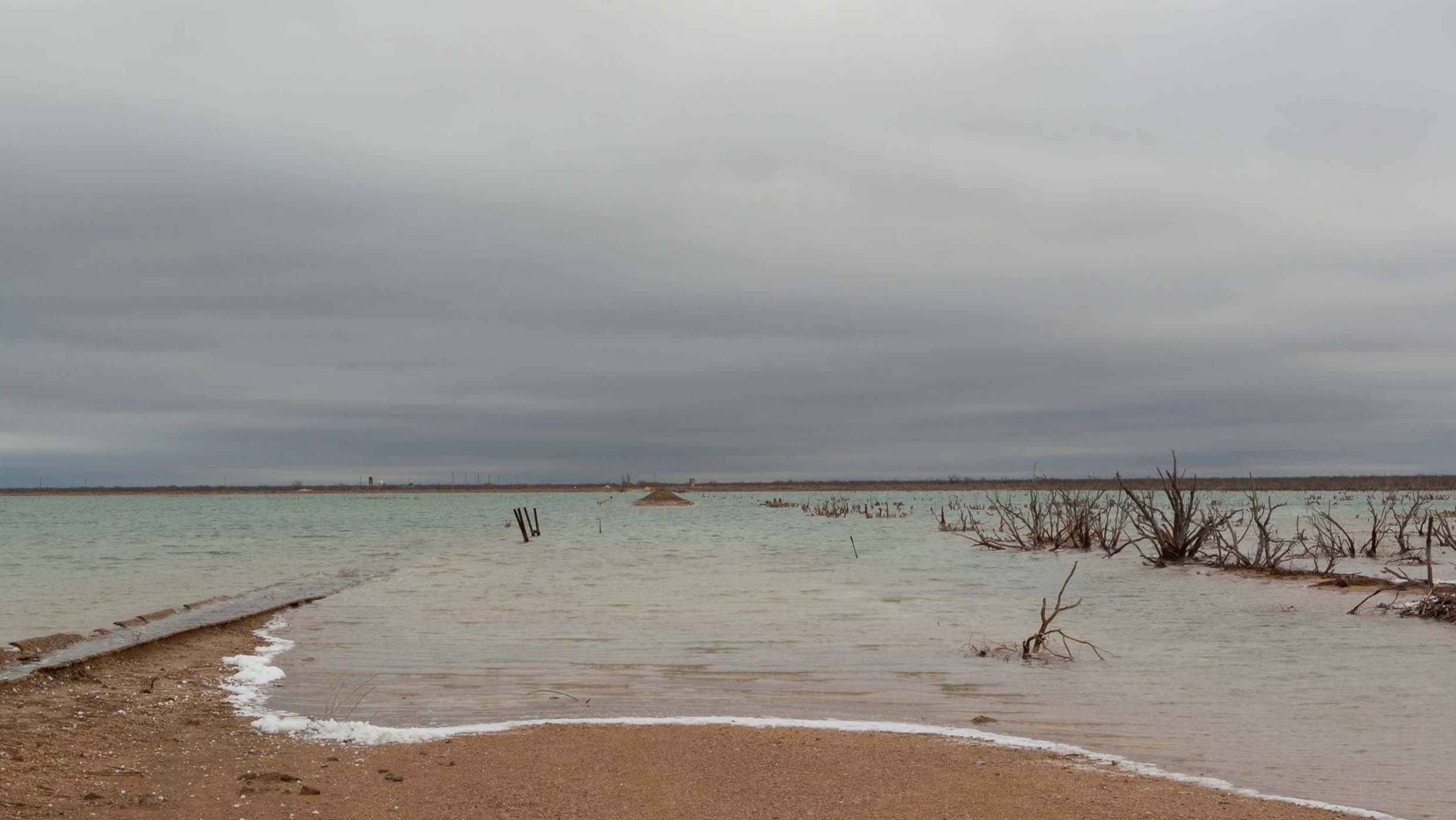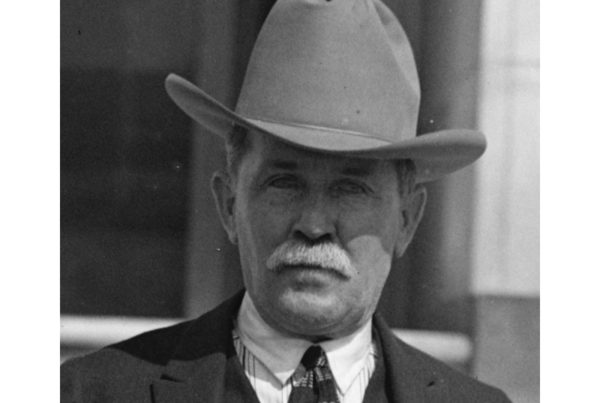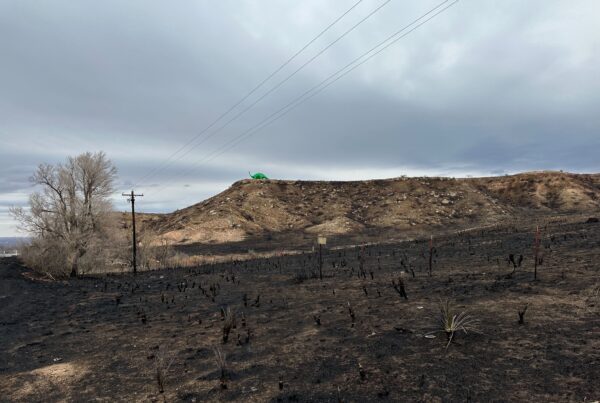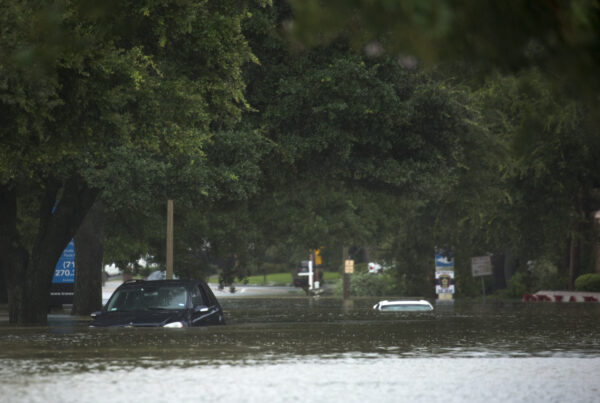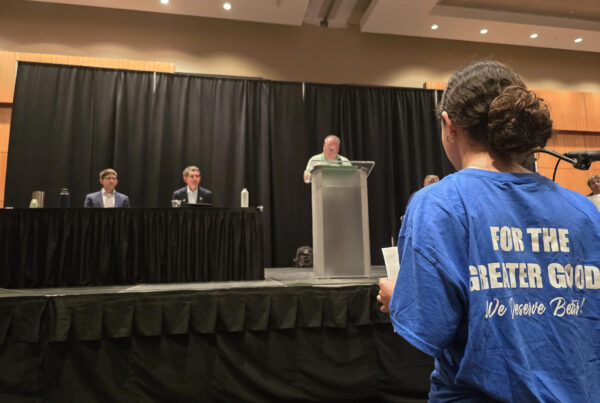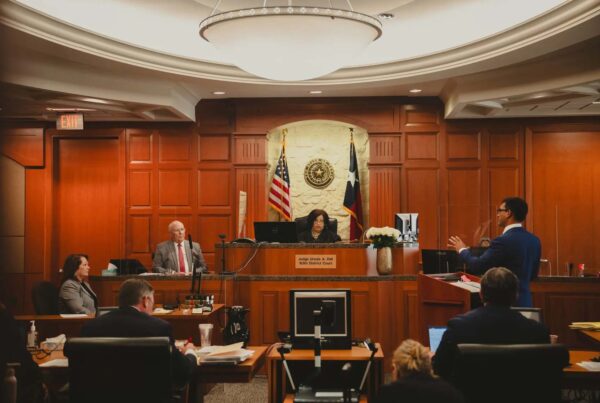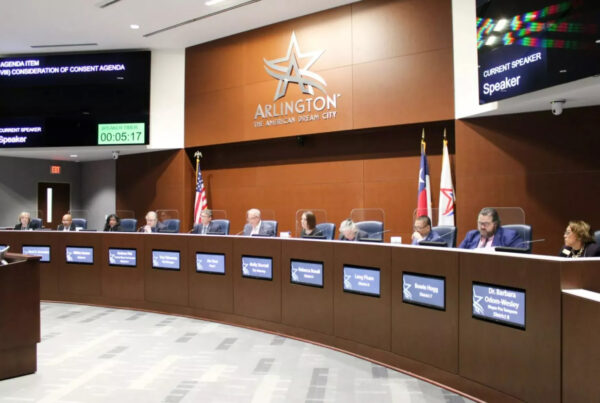From Marfa Public Radio:
In the rusting oil fields north of Fort Stockton, there is a well that has been left leaking for decades — and in that time, it has created a body of water known as Lake Boehmer.
The source of the lake is a former oil well, which is an angry cauldron that has been recorded spewing up to 642 gallons of toxic salt water a minute. Today, the approximately 60-acre body of water created by the leak is slightly radioactive and filled with heavy metals like arsenic.
“It’s actually kind of pretty,” Ty Edwards, manager of the Middle Pecos Groundwater Conservation District, said. “Cause in West Texas you don’t have a lot of bodies of water, so you pull up on it and it looks pretty, but it’s not usable.”
Documents show the well, originally known as the Sloan Blair No.1, was drilled looking for oil in 1951 in northern Pecos County. But failing to find oil, the operator transferred the well to the landowner — legally converting it into a water well. Then in the mid-90s, Edwards says, the well began to leak. According to a recent report, the water quality has deteriorated over time as the well has fallen into disrepair. Now, water is coming into contact with geological formations and is pulling out salt and other impurities.
As you approach the lake, the roar of water is accompanied by an acrid smell which is hydrogen sulfide, or H2S, a dangerous, naturally occurring gas that is being released by the well. In high enough concentrations, it can kill instantly.
Edwards has been leading the effort to plug the well at Lake Boehmer, because he’s worried the toxic water will contaminate three local aquifers and that the H2S is a danger to public health.
“Everything is dead,” Edwards said, looking at the bone-like trees lining the shore. “Look at the lake, it’s not typical West Texas land, c’mon now, yes, West Texas is pretty barren, but this is dead.”
For years, Edwards has been trying to convince state officials to intervene. Mainly, he’s been aiming to get the Railroad Commission of Texas, the state’s oil and gas regulator, involved.
However, officials at the agency, which is charged with making sure wells drilled by the industry are plugged, continually rebuff his efforts.
“We’ve been through this a number of times, the Lake Boehmer well was drilled as an oil and gas well and converted into a water well — using appropriate forms — decades ago,” Alex Schoch, general counsel to the Railroad Commission, explained in March. “We don’t have legal authority over wells that aren’t oil and gas wells — it’s that simple.”
Poison gas, a bitter fight and an administrative form
In 2022, attorney Cole Ruiz appeared before the commission on behalf of the Middle Pecos Groundwater Conservation District to present a report that had found extraordinarily high amounts of H2S being released at Lake Boehmer.
“The levels of H2S they have out there is a lethal level,” he said. A study presented to the agency by Ruiz showed that 14,428 parts per million of H2S has been recorded at the Lake.
Over the years, the amount of H2S at Lake Boehmer has varied, but it has been enough to be considered dangerous. Ruiz asked the three commissioners that lead the agency for help stopping the flow — which would mean plugging the well. However, they were suspicious of his claims — especially Christi Craddick.
As he described the bleak landscape around the lake, she interjected, “It’s barren cause it’s in the middle of West Texas. I grew up out there and you’re in the middle of a drought.”
There are thousands of abandoned wells across Texas and the Railroad Commission spends millions of dollars annually plugging a number of them. However, agency officials have refused to take care of the well at Lake Boehmer claiming it is outside of their jurisdiction because it is a specific kind of well known as a P-13.
This name is a reference to the commission’s current form that is used to convert oil and gas wells into water wells. According to commission staff, once this process is complete, these wells are no longer the commission’s responsibility because they are officially considered water wells.
Craddick told Ruiz in 2022, “Once it becomes a P-13 well, that is out of our authority. It becomes a water well and as you know we have water wells all over our state. Statutorily, we don’t have authority over a water well.”
Agency officials say the landowner or the Middle Pecos Groundwater Conservation District are responsible for plugging the well at Lake Boehmer, which could potentially cost millions. In Texas, water wells are primarily a property owner’s responsibility to plug.
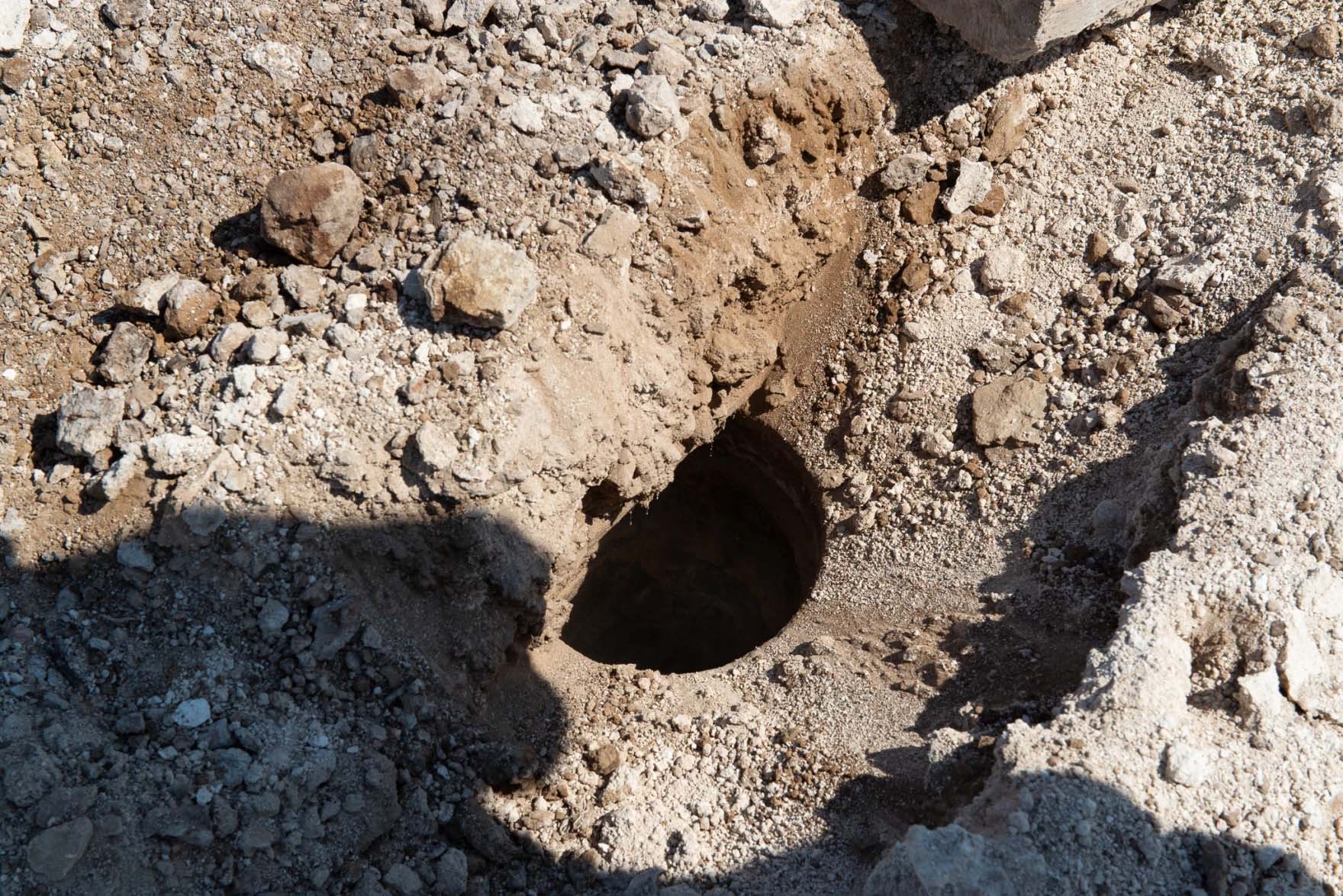
Across West Texas’ oil fields you can find open oil and gas wells — abandoned by drillers that need to be plugged. Annually the Railroad Commission of Texas spends millions plugging these “orphan” wells.
Mitch Borden / Marfa Public Radio
However, when Ruiz tried to point out the commission had the resources and the ability to take care of the lake, Craddick responded, “You’re telling us we’re responsible for it because we look like a money pit, but we are not a money pit.”
This meeting set the tone for a bitter fight between the Railroad Commission and the Middle Pecos Groundwater Conservation District. Ruiz is currently working to prove the well at Lake Boehmer, along with three other leaks, qualify to be plugged by the commission and he is ready for a long legal battle to prove it.
“If you ask them, they are doing everything they can to plug every abandoned well in the state,” Ruiz told Marfa Public Radio earlier this year. “But when you are looking at plugging certain wells because it’s low hanging fruit and avoiding the big ones because, well, it’s gonna make you look bad — that political maneuvering and jockeying can cause real harm.”
In 2023 alone, using a combination of state and federal funds, the Railroad Commission spent over $52 million plugging 1,754 wells, while the well at Lake Boehmer was left flowing.
“It’s a really big scar”
In the area around Lake Boehmer, there are dozens of wells that need to be plugged, ranging from P-13s and water wells to oil and gas wells and wells that are hard to identify.
Recently, this area has become notorious for wells erupting noxious water. In 2022, a 100-foot geyser shot out of an old well, salt water has been found bubbling up from aging equipment and oily mixtures seep out of pump jacks.
As more leaks are discovered, Railroad Commission officials pick and choose which ones they will plug. One person who knows this all too well is Schuyler Wight, who owns a cattle ranch south of Lake Boehmer.
Driving across his land on bumpy dirt roads, he points out junk left over from decades of oil drilling. Wight estimates there are about 250 abandoned wells across his property.
Wight pushed through brush to get to a specific leak that has sprouted a swamp. As he emerged into a clearing, he described the scene: “There’s several acres where everything is dead. There’s a pool of black water. A lot of salt crystals on the ground, really it’s just a dead zone with nothing around it.”
A theory gaining traction to explain why so many wells are leaking in this area points to wastewater and other substances from the oil and gas industry being injected into the ground. This practice is common across the Permian Basin, which environmental groups say is increasing pressure and driving water out of aging wells.
Recently, a letter sent to the Environmental Protection Agency signed by a number of environmental groups, urged the EPA to push the Railroad Commission to improve and enforce its regulations on injection wells. The authors pointed to Lake Boehmer and other leaks as potential consequences of too much produced water and other substances being injected underground.
Wight has gone to the Railroad Commission repeatedly to ask for a number of wells on his property to be plugged — including the leak that created the small swamp. So far, it is still flowing, and Wight doesn’t believe anything will grow around the well for years because of all the brine that has seeped into the ground.
“It’s a pretty big scar. I mean it’s the most dramatic [leak] but, to me, it may not be the worst one. We don’t know what’s going on underground,” Wight said.
He worries toxic water is contaminating aquifers or eroding geological formations — which could eventually create sinkholes. To him, it does not matter why a well was drilled, if it sprouts a leak, the state should plug it and then figure out later who is financially responsible. According to Wight, it should not be this hard to protect his land.
“The sad thing is this is our future. This is what’s going to be the rest of my life, the rest of my kid’s life. You know they’re going to be fighting this fight,” he said.
More people are taking notice though. A coalition of landowners, local officials and environmentalists are pushing the state to address this problem.
People like Raymond Straub. He is a geoscientist that has studied Lake Boehmer and a lot of the leaking wells in Pecos County.
He said, “Every oil well we put out there we have a debt for that well. Every water well that’s put out there, there’s a debt for that well. You need to plug them and you need to make sure they stay plugged and are plugged properly to begin with.”
Currently, he is working with the Middle Pecos Groundwater Conservation Districtassessing around 40 wells — including 10 major leaks. According to him, these wells are decaying and the longer they are left to flow the harder and more expensive it will be to get them under control.
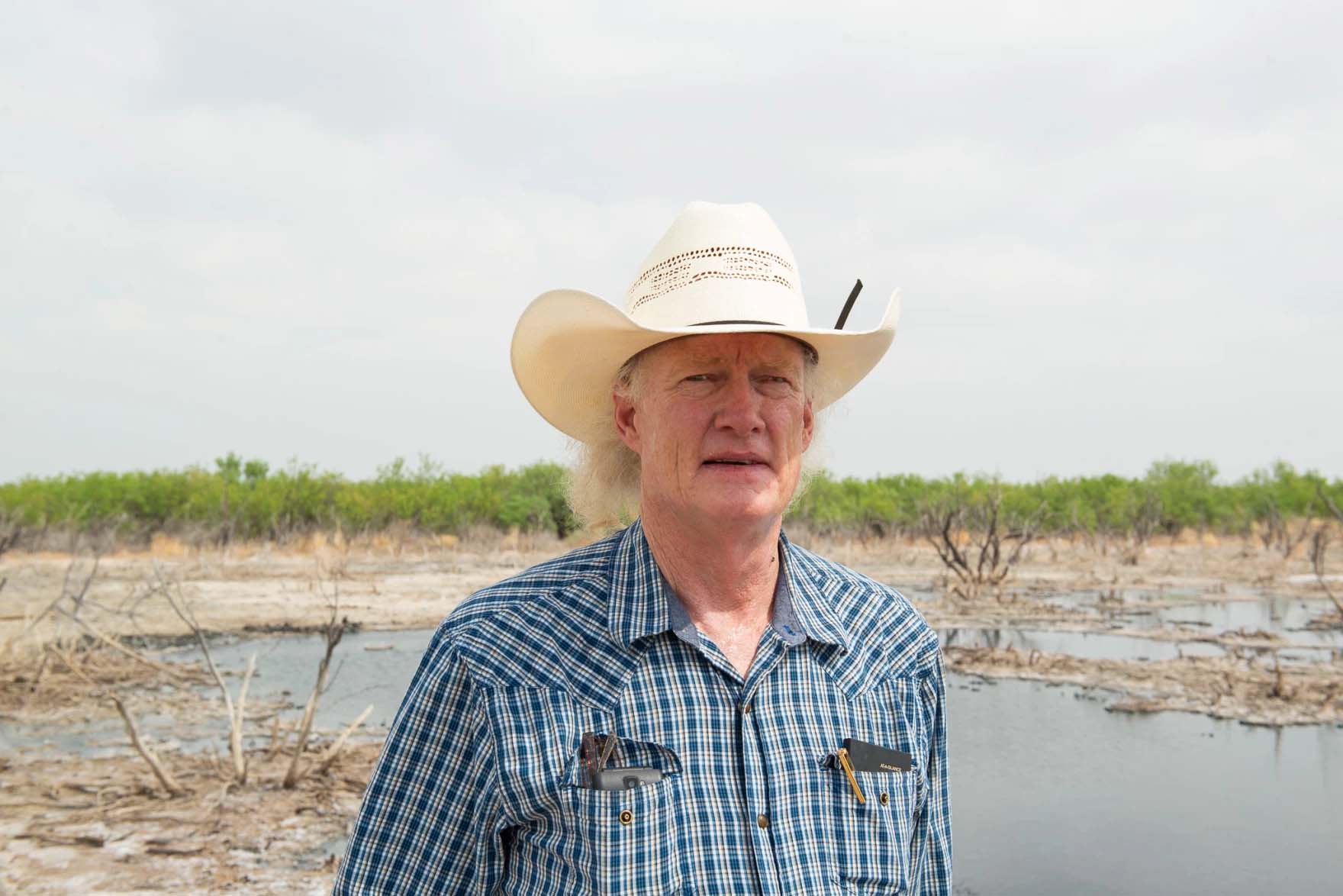
Schuyler Wight routinely travels to Austin to testify before the Railroad Commission to ask for help with a number of dilapidated wells across his land.
Mitch Borden / Marfa Public Radio
“Some of these are getting to the point where there’s not going to as much interest in plugging them because financially it’s going to outpace anybody’s desire to spend that kind of money,” Straub explained.
There is some hope that there will be money eventually to help the groundwater conservation district plug some of these wells though. Last spring, the state lawmakers established a grant program to help rural communities plug leaking water wells.
Ten million dollars were earmarked for this purpose, however the soonest these funds will be available is next year and the rules dictating how this money will be distributed are currently being created.
This legislation was a huge victory for the Middle Pecos Groundwater Conservation District, but Straub said there’s still a lot of work to do.
“It may seem simple on the face of it, but there are many facets to trying to get these things plugged. There’s a technical component to it, there’s a political component to it,” he explained, “There’s a finance component to it and each one of those has to be managed properly.”
As the Middle Pecos Groundwater Conservation District tries to balance all those factors, Ruiz is still pushing the district’s case against the Railroad Commission forward. Claiming that since the well that sprouted the lake was originally an oil well the agency has the power to plug it.
And, recently, new evidence emerged that backs up his argument.
A revealing memo
In 2022, shortly after Ruiz approached the Railroad Commission for help with Lake Boehmer, commission attorney Scott Larson wrote a memo examining whether the agency has the authority to plug the well at Lake Boehmer and others like it. The document was privileged, but it was accidentally released in a public information request.
The six-page memo covers a variety of topics including relevant state law and historical precedent concerning the commission plugging converted water wells. And even though top commission officials claim Lake Boehmer is outside of the agency’s jurisdiction, Larson found the opposite.
He determined the landowner in 1951 appeared to have followed “relevant Commission rules and procedures when he converted the oil well to a water well. Therefore, the Commission has the authority to plug.” Larson noted, this action should be taken if the leak is threatening fresh water or oil and gas reserves.
Virginia Palacios is the executive director of Commission Shift, a group dedicated to reforming how the Railroad Commission operates. From her perspective, agency officials do not want to admit they can take care of Lake Boehmer.
She said, “They’re kind of choosing to just fall back on this idea that it’s definitely not their responsibility, that it should always be the Middle Pecos Groundwater Conservation District’s responsibility or the landowners.”
The memo also highlights that the commission “may order a responsible landowner to plug a converted well” and the groundwater conservation district has a “similar responsibility and jurisdiction.”
Still, Palacios believes this document can hold the oil and gas regulator more accountable.
“I mean, I think it provides a legal basis for the public to demand the Railroad Commission deals with these disaster sites,” she said.
When asked about the 2022 memo, Patty Ramon, a spokesperson for the commission, doubled down on the regulator’s claim that it can only plug oil and gas wells.
In a terse email, she said, “As we have stated numerous times the Lake Boehmer well was converted to a water well more than 70 years ago; it is not in the [Railroad Commission’s] jurisdiction.”
But earlier this year, the commission would take action on a well without knowing whether it fell under the agency’s jurisdiction — spending a fortune on a massive leak just 20 minutes away from the lake.
A leak just down the road
In December, a well belching over 13,000 gallons of toxic brine an hour was discovered soaking ranchland north of Lake Boehmer in Crane County. The commission quickly dispatched work teams to find and plug the leak, digging pits to divert the flow as vacuum trucks worked around the clock to transport water away from the work site.
It took almost two months to plug the leak, costing approximately $2.5 million and in the end the leak was not from an oil and gas well. Danny Sorrells, the Railroad Commission’s director of oil and gas, briefed the commission in late January.
“This well is on no map. We went through historical maps, we looked at everything, this is not an oil well,” he explained. “Our number one goal, the way I look at it, is to protect the freshwater of the state of Texas.”
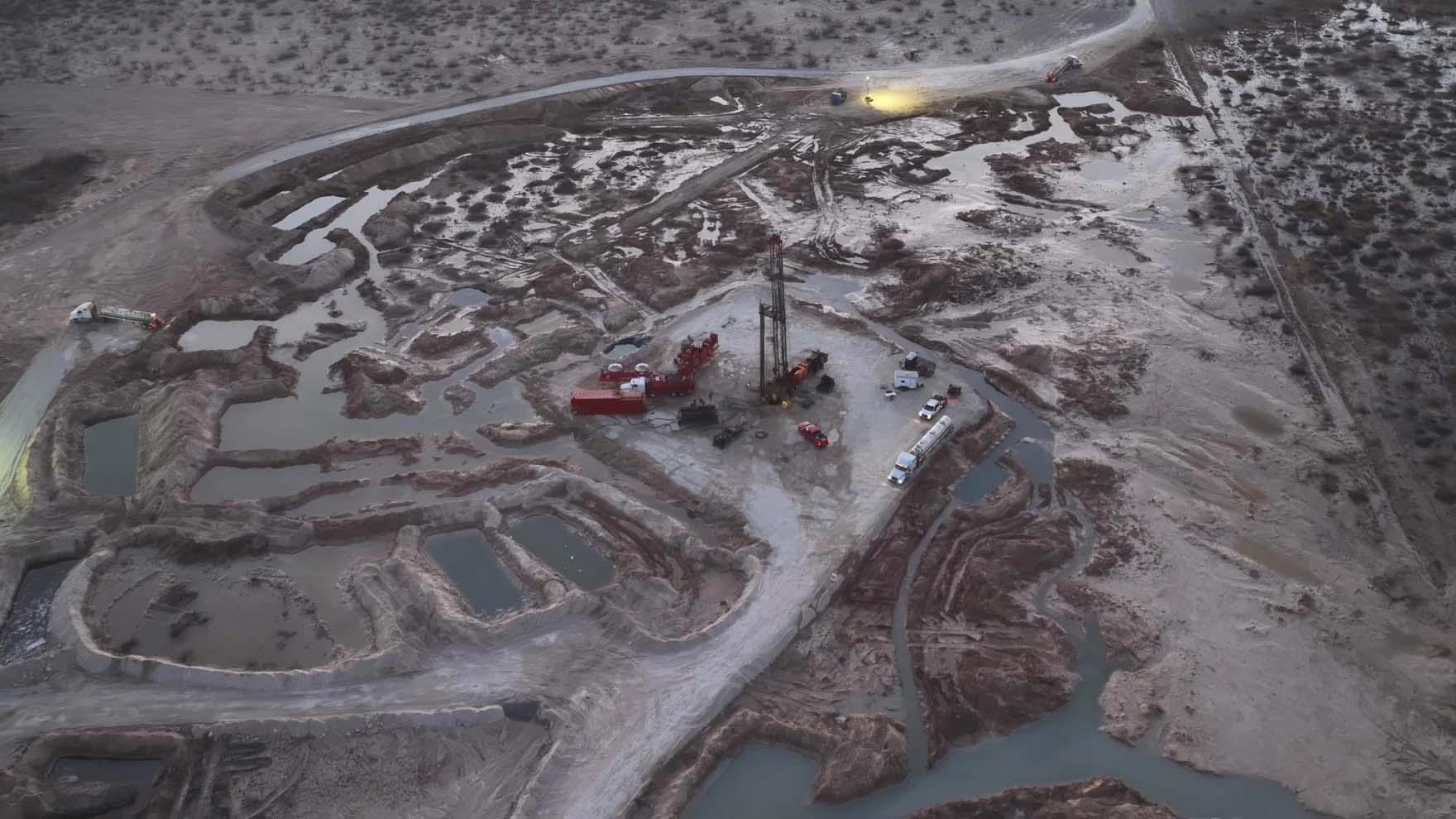
An aerial photo taken on Jan. 9 of a large brine water leak in Crane County where crews work to contain the flowing water.
Photo Courtesy Of Sarah Stogner
But, according to Palacios, it doesn’t make sense that the leak in Crane County was plugged and then celebrated by Railroad Commission officials, while the regulator ignores Lake Boehmer.
“In some ways, it sort of feels like they are just digging in their heels on this like multi-year black eye that they’ve had with Boehmer Lake,” she said, “They just don’t want the other side to win.”
As the Railroad Commission and the Middle Pecos Groundwater Conservation District continue to wrestle over Lake Boehmer, both sides are entrenched in their legal fight.
“Bottom line is that we need some help,” Ty Edwards said. “We just feel like we’re left behind.”
Unless something changes though, toxic water will continue to flow at Lake Boehmer, which could mean it might be a while before Edwards and his allies see the waters recede.


